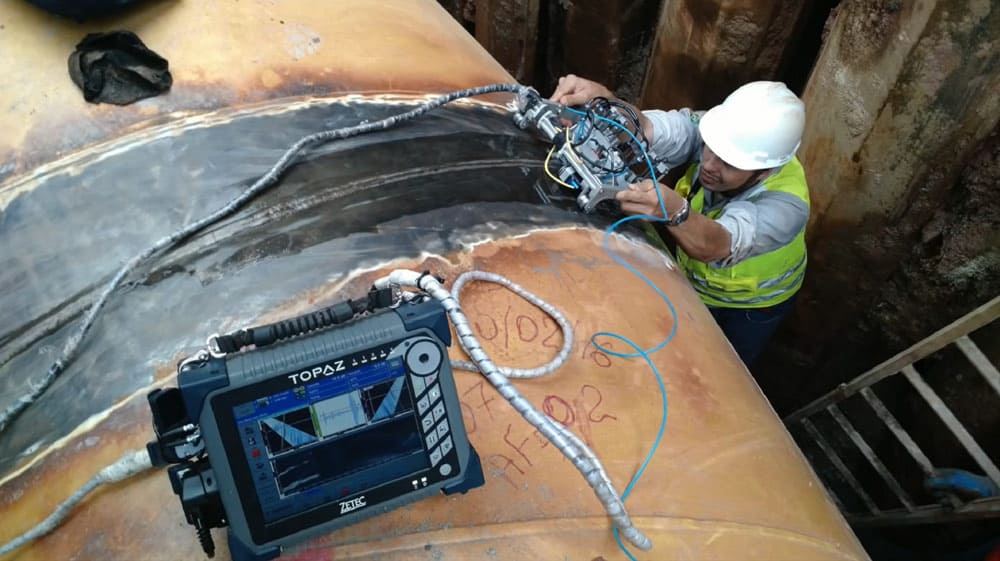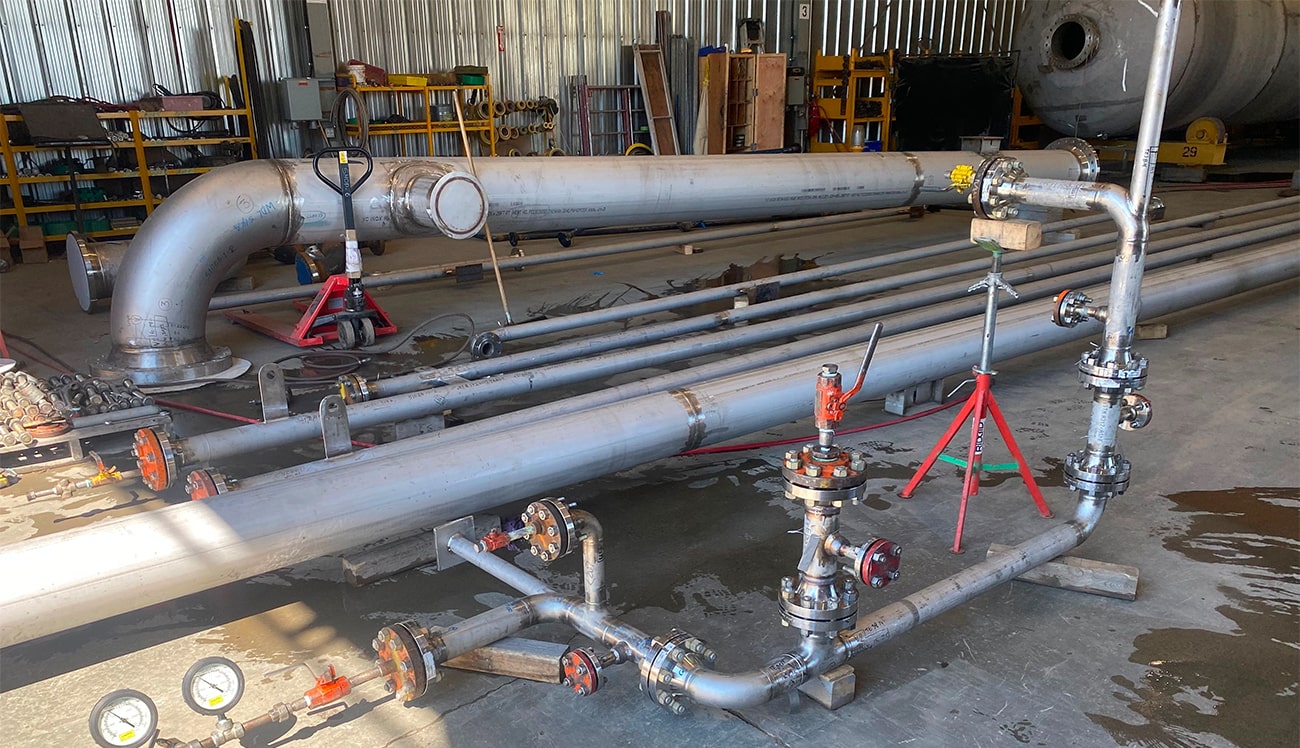
Ideal Practices for Pipe Welding Assessment: Methods, Specifications, and Procedures to Accomplish Quality Control and Compliance
Reliable pipeline welding assessment is vital for guaranteeing the honesty and safety of crucial facilities. By employing a combination of techniques such as aesthetic examination and progressed non-destructive screening approaches, in addition to adherence to developed industry requirements like those from ASME and AWS, companies can dramatically improve their quality guarantee processes. However, the application of these ideal methods postures numerous difficulties that warrant mindful consideration. Understanding the complexities associated with each stage of examination is essential to achieving conformity and integrity in pipe systems. What details approaches can be utilized to browse these obstacles properly?
Relevance of Welding Inspection
The honesty of bonded joints is vital in making sure the safety and reliability of pipe systems. Proper welding techniques and thorough evaluation procedures are crucial to protect against failures that can lead to disastrous occurrences, ecological damage, and loss of life. Pipeline Welding Inspection. Welding assessment functions as a safety net, determining issues such as fractures, porosity, and incomplete combination before they escalate right into severe issues
Moreover, pipeline systems often operate under high stress and severe problems, making the high quality of welds even much more vital. Regulatory compliance is one more considerable element, as numerous standards determine the quality control processes that need to be followed in pipe building and maintenance. Failing to comply can lead to lawful ramifications and monetary losses.

The duty of welding inspection expands past plain confirmation of handiwork; it includes the guarantee of lasting operational honesty. This involves a methodical strategy that consists of not only aesthetic examinations yet likewise progressed non-destructive testing approaches. Eventually, reliable welding assessment is a financial investment in the long life and safety and security of pipeline systems, ensuring they operate as intended while minimizing threats connected with material deficiencies.
Secret Examination Strategies

Visual evaluation, usually the very first line of defense, enables the identification of surface area flaws such as cracks, undercuts, and porosity. Ultrasonic screening uses high-frequency sound waves to discover inner imperfections, supplying a complete analysis of weld integrity. This non-destructive technique is specifically effective for determining suspensions that may not show up externally.
Radiographic screening includes using X-rays or gamma rays to generate pictures of the welded joint, revealing inner flaws. This method supplies in-depth insights but may call for specific tools and safety and security considerations. Last but not least, magnetic particle testing works for identifying surface area and near-surface discontinuities in ferromagnetic materials, using magnetic fields and great iron bits.
Market Criteria and Rules
Conformity with sector standards and regulations is vital for making sure the high quality and security of pipe welding examinations. These requirements give a structure for ideal techniques webpage in welding processes, products, and evaluation strategies, enabling companies to reduce defects and improve the stability of pipe systems. Trick bodies such as the American Culture of Mechanical Engineers (ASME), the American Welding Society (AWS), and the International Organization for Standardization (ISO) set forth standards that are widely identified and embraced within the industry.
In the USA, laws from the Pipe and Hazardous Products Security Administration (PHMSA) govern the safety of pipe procedures, mandating strenuous assessment methods. These standards not just offer to shield public safety and security and the environment however additionally guarantee compliance with lawful and contractual obligations. Adherence to the appropriate codes, such as ASME B31.3 for process piping, is essential for maintaining operational effectiveness and regulatory conformity.
In addition, constant updates and revisions to these standards show technological developments and developing sector methods, stressing the demand for organizations to remain informed and train workers appropriately. Ultimately, robust compliance with well established requirements promotes trust and reliability in pipeline framework, guarding both stakeholders and possessions.
Reliable Examination Treatments
Effective examination treatments are important for determining possible problems in pipeline welds and guaranteeing the general integrity of the system. A methodical strategy to evaluation encompasses several essential stages, including pre-weld, in-process, and post-weld assessments. Each stage plays an essential role in maintaining quality control.
Throughout pre-weld inspection, it is vital to examine the materials and joint arrangements, ensuring compliance with project specifications. In-process inspections include monitoring welding techniques and criteria, such as warmth input and take a trip rate, to avoid flaws from happening. This stage permits real-time changes to welding practices.
Post-weld assessments consist of non-destructive testing (NDT) methods like radiography, ultrasonic testing, and magnetic bit testing. These approaches assist identify interior and surface area problems that can endanger the pipe's functionality. Paperwork of all examination activities is extremely important, supplying a traceable document that sustains compliance with sector requirements.
Educating and accreditation of assessment employees even more boost the effectiveness of these treatments. By sticking to an organized assessment protocol, organizations can minimize threats, guarantee conformity, and eventually provide pipelines that fulfill strict safety and security and efficiency demands.
Typical Challenges and Solutions
Pipeline welding evaluation provides several company website common obstacles that can influence the high quality and safety and security of the end product. One considerable difficulty is the irregularity in welding techniques and products, which can cause irregular weld quality. To resolve this, it is crucial to develop standard procedures and training for welders, making certain an uniform method across projects.

Environmental variables, consisting of temperature level and humidity, can also affect the welding process, possibly leading to splits or incomplete blend. Carrying out regulated environments and sticking to pre-weld procedures can reduce these risks.
Conclusion
Finally, the execution of ideal techniques for pipe welding evaluation is vital for guaranteeing high quality guarantee and compliance with sector requirements. A comprehensive technique, incorporating numerous techniques such as aesthetic, ultrasonic, and radiographic testing, assists in the recognition of problems throughout all phases of the welding process. Pipeline Welding Inspection. Adherence to have a peek here developed regulations and efficient inspection procedures not just enhances the dependability and safety and security of pipeline systems yet likewise minimizes risks linked with welding defects, consequently advertising overall functional honesty
Compliance with market criteria and regulations is essential for ensuring the high quality and safety and security of pipeline welding examinations. These standards supply a structure for best methods in welding procedures, materials, and evaluation strategies, allowing organizations to decrease defects and enhance the stability of pipe systems.In the United States, policies from the Pipe and Hazardous Products Safety Management (PHMSA) control the safety of pipeline procedures, mandating strenuous assessment protocols. A methodical strategy to assessment includes several essential phases, consisting of pre-weld, in-process, and post-weld assessments.In final thought, the execution of ideal techniques for pipe welding examination is essential for ensuring quality guarantee and conformity with sector criteria.